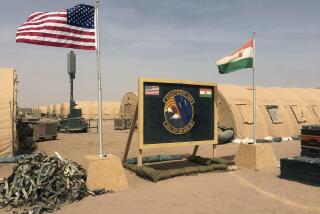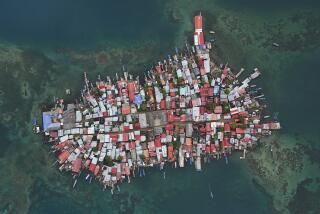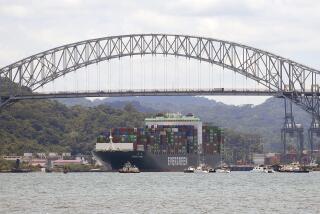Regional U.S. Army HQ Pulls Out of Panama
FT. CLAYTON, Panama — The United States’ long goodbye to Panama neared an end Friday with the formal departure of the regional U.S. Army headquarters, leaving only a few hundred soldiers until the Panama Canal is handed over at year’s end.
“Your 88-year mission here is done,” Marine Gen. Charles E. Wilhelm, head of the U.S. Southern Command, told a closing ceremony at Ft. Clayton’s Soldier’s Field parade ground. “You can report with pride: Mission accomplished.”
The Southern Command, the administrative head of all branches of the U.S. military in the region, moved out of Panama in 1997. But Friday’s ceremony marked the exit of the regional headquarters of the U.S. Army, which had the largest presence in Panama. That headquarters moves to Ft. Buchanan in Puerto Rico.
As Panamanian President Ernesto Perez Balladares looked on and a bagpiper played “Auld Lang Syne,” a color guard dressed in tan, 1911-style U.S. uniforms and bearing Springfield rifles turned over flags to another color guard dressed in modern camouflage uniforms and carrying M-16 rifles. The modern guard then marched out the gates of Ft. Clayton, past U.S. and Panamanian flags.
Maj. Gen. Philip R. Kensinger Jr., commander of U.S. Army South, said the troops were saying goodbye to Panama, “and in doing so, holding our heads high with the knowledge that Panama and the region have been better for our presence.”
Since the 1977 treaty signed by President Jimmy Carter and Panamanian leader Omar Torrijos, the United States has gradually been turning over its 453,000 acres of holdings in the Canal Zone and military bases.
On Dec. 31, the United States turns the canal over to Panama, ending a relationship between the two countries that began with Panama’s birth as a nation in 1903. The first U.S. soldiers permanently assigned came in 1911 to guard construction of the Panama Canal, which opened in 1914.
Until the mid-1990s, more than 10,000 U.S. troops were based in Panama. During World War II, about 65,000 troops were based there.
More to Read
Sign up for Essential California
The most important California stories and recommendations in your inbox every morning.
You may occasionally receive promotional content from the Los Angeles Times.










